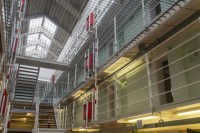In St-Julien, amid the gentle landscape and the gravelly soil, there is a vineyard that had gone to sleep. According to the 1855 classification, Branaire-Ducru was a fourth growth. Back in the 1980s, however, it was neither rated nor priced accordingly. People bought it because it was relatively cheap, but it had slipped a long way behind its neighbour, Beychevelle. Though that was also a fourth growth, it often delivered second-growth quality. No one was saying that about Branaire-Ducru.
Then came new owners, the Maroteaux family, who brought investment, energy and an almost sacramental commitment to producing serious wine. Bacchus, libations, the First Miracle, the Last Supper, the Communion Service: blessed are the wine-makers, for they are the cup-bearers of the Gods. All serious vignerons have a vocation, a calling. The famille Maroteaux are no exception.
Last week, I was fortunate enough to taste some of the fruits of the resurrection of Branaire-Ducru. As always with proper claret, there was complexity. We all know what we are looking for in the glass: a harmony of bone and flesh, structure and fruit, power and elegance. But it is easy for the mere drinker to take all that for granted; to forget to acknowledge the skill, experience and luck underlying this process. It is never a simple business to harness the grapes and the climate. Although it may not quite be water into wine, each vintage is the renewal of a great mystery and an ancient miracle.
M. et Mme Maroteaux brought us plenty to celebrate. Their 2003 won acclamation. A number of people who have drunk their way round the hauts-lieux of Bordeaux proclaimed that it was just about as good a 2003 as they had encountered. From a memorable vintage, the 2000 ought to be special. It was, though it needs a fair few more years. The 2001 was also backward, but with tremendous promise. These are wines whose quality has earned them the time to mature. The development of Branaire-Ducru from the grape to the barrel to the bottle, to the consecration of the opening, the communion in the glass, is a dance to the music of time.
Then there was the 1995, which provoked discussion and disputation. Some thought that it needed drinking up because the fruit was beginning to wane. Others were vehement in disagreement. They insisted that the wine was still slumbering and that when it did emerge from the seven sleepers’ den, it would be magnificent. That was my view. In his tasting notes, Saintsbury ruminates on the 1872s. They had an unyielding adolescence, which led some oenophiles to lose patience and to banish them from the cellar to the kitchen. Classed growths were disrated into cooking wine. Others persevered, and were rewarded. Around 1912, the surviving bottles blossomed. So will that 1995.
To maximise revenue, many of today’s wine-makers adapt their techniques to enable their wines to be drunk young (something similar seems to be happening with contemporary politicians). That is not true in Branaire-Ducru. Time is needed, time is taken. We finished off with the 2005, and the first word on most lips was minerality. Gravel is good for vines. It encourages the roots to force themselves deeper while protecting their tops from rain. The 2005 is full of fruit and style. But there is also a hint of gravel. It is going to be very good indeed. So, by all accounts, will the 2010: another superb wine in a resplendent vintage. As they described its qualities, the Maroteauxs’ voices thickened into awe. Those bottles will be well worth the wait.
The château also produces a second wine, Duluc de Branaire-Ducru, which has many of its elder brother’s strengths. To conclude: if you have some Branaire-Ducru, you are fortunate. If you can afford some, you will not be disappointed.





Comments